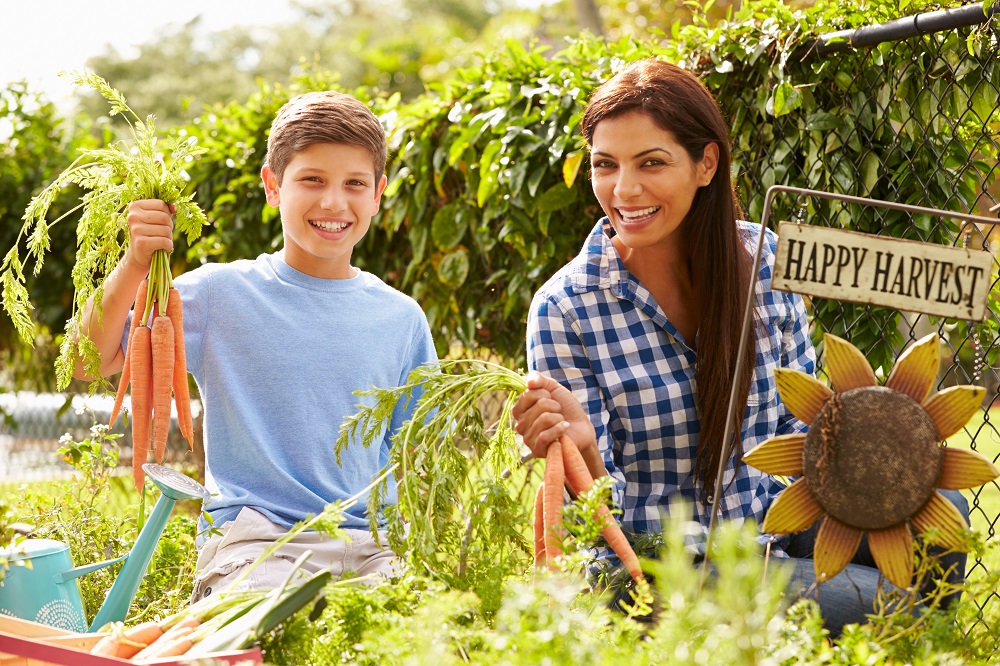
22 Jul 5 Cost-Effective Organic Gardening Hacks for a Bountiful Harvest
Committed to organics, but wishing you could get more out of your harvest? Wondering how you can turn a small space into a bountiful garden that can feed the whole family? Pleased with your results so far, but have a niggling feeling you could be doing better?
You’ve come to the right place. With these five gardening hacks, you can turn your organic garden into a veritable feast! And the best part is, they’ll cost you practically nothing and will save you time.
1. Plant in triangles instead of rows
Whether you have a few square metres or an acre to work with, making your space as efficient as possible is one sure-fire way to boost your harvest. So, do your planting in triangles instead of rows. On average, this will allow you to fit between 10 and 15% more plants in your garden. Don’t get too enthusiastic, though – make sure you leave enough room for healthy crops to grow. Crowding can lead to disease, while ample spacing can help some plants to flourish. Check planting instructions before proceeding.
2. Take advantage of companion planting
You’ve probably heard of the classic example of companion planting – corn, beans and squash – which is a tip from the Native Americans. When grown in close proximity, these vegetables support each other, thereby maximising output. The corn provides “poles” for the beans, while the squash keeps the weeds at bay. Because the plants are not competing with one another, all available resources are used to their utmost. Other plants that love being together are strawberries and watermelon, garlic and spinach (with the garlic in two rows, creating an ‘aisle’ for the spinach), and beets and celery. What’s more, a recent study at Iowa University demonstrated that companion planting can help to reduce damage from insects and pests.
3. Get into the habit of succession planting (aka relay planting)
Succession planting involves getting the most not only out of your space, but also out of the time that the season allows. There are two ways of doing this. First, when growing crops with predictable maturation periods, sow them in two or three lots, with a few weeks between each. Second, use seedlings rather than seeds, when replacing one crop with another, so that the gap between successions becomes minimal.
4. Get picking – early and often
Rather than waiting until every fruit and vegetable in your garden is utterly ripe, err on the side of caution by picking early. After all, there are plenty of delicious dishes you can make with young squash or just-ripe peas. After the first harvest, get picking on a frequent basis – set yourself a timetable, if necessary. Harvesting early and often “tricks” your plants into thinking they should reproduce more intensely and for longer. One study conducted at Utah University’s Sustainable Agriculture Research and Education, compared yields of summer squash, where one group was harvested daily and the other every two or three days. The results showed that daily harvesting led to a significantly bigger overall harvest. You can read the study here.
5. Plant mini-gardens that chase the sun
Whether you live in an apartment or on a farm, conduct a thorough exploration of your property to work out where the sunniest spots are. Any place where the sun shines for at least a few hours per day could potentially be home to a mini-garden. Depending on how much space you have, this might consist of a plant pot or a miniature vertical garden. Also, be sure to choose appropriate crops for the size and scope of each spot.
To give your seeds and plants a strong start, try using an eco-friendly Jiffy pot or a windowsill greenhouse.
Overall, the health, environmental, and economical benefits that organic gardening or farming provides cannot be overemphasised. Therefore, with these five simple gardening hacks, you can be sure of not only reaping these benefits from your organic garden or farm; but reaping them in tons of abundance.






No Comments